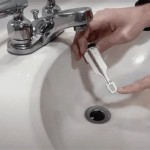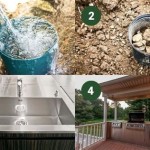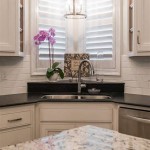Pros and Cons of Copper Sinks
Copper sinks have become increasingly popular among homeowners and designers seeking to add a touch of rustic elegance or modern sophistication to kitchens and bathrooms. Their unique aesthetic appeal, combined with practical attributes, makes them an attractive option. However, like any material choice for home fixtures, copper sinks come with their own set of advantages and disadvantages that should be carefully considered before making a purchase. This article explores the pros and cons of copper sinks to provide a comprehensive understanding for potential buyers.
Aesthetic Appeal and Design Versatility
One of the primary reasons for the popularity of copper sinks is their distinct aesthetic. The warm, reddish-brown hue of copper adds a sense of richness and character to any space. Copper's natural patina, which develops over time as the metal oxidizes, contributes to its unique charm. This aging process results in color variations that differ from sink to sink, making each one a one-of-a-kind piece. The patina is not simply a surface discoloration; it is a protective layer that helps to preserve the integrity of the copper underneath.
Copper sinks are available in a wide range of styles, from traditional farmhouse designs to sleek, modern minimalist forms. This versatility allows them to seamlessly integrate into various design schemes, including rustic, industrial, contemporary, and even classic interiors. Hammered copper sinks, for example, often feature a textured surface that adds visual interest and depth, while smooth, polished copper sinks offer a more refined and streamlined appearance. The ability to choose from different finishes and textures ensures that a copper sink can be tailored to complement the overall aesthetic of the room.
Furthermore, copper sinks can be incorporated into different types of installations. They can be undermounted for a seamless look, or they can be installed as drop-in or apron-front sinks, each providing a distinct visual impression. The flexibility in installation options further expands the design possibilities and allows for greater customization.
Antimicrobial Properties and Health Benefits
Copper is naturally antimicrobial, meaning it inhibits the growth of bacteria, viruses, and fungi. This inherent property is a significant advantage for use in sinks, which are frequently exposed to microorganisms. The antimicrobial action of copper is due to its ability to disrupt the cell membranes of microbes, leading to their inactivation. Studies have demonstrated that copper surfaces can significantly reduce the presence of harmful bacteria like E. coli and Salmonella, making them a more hygienic option compared to sinks made from other materials.
The antimicrobial benefits of copper can contribute to a healthier home environment by reducing the risk of cross-contamination and the spread of infections. This is particularly relevant in kitchens, where food preparation can introduce various microorganisms. Using a copper sink can help to maintain a cleaner and more sanitary workspace, reducing the potential for foodborne illnesses. In bathrooms, copper's antimicrobial properties can help to control the growth of mold and mildew, contributing to better indoor air quality.
It is important to note that the antimicrobial effectiveness of copper is influenced by factors such as humidity, temperature, and the presence of organic matter. While copper can significantly reduce the number of microorganisms present, it does not eliminate them completely. Therefore, regular cleaning and maintenance are still necessary to maintain optimal hygiene.
Durability and Longevity
Copper is a durable and long-lasting material that can withstand everyday use. When properly maintained, a copper sink can last for decades, making it a worthwhile investment. Copper's resistance to corrosion and rust is a significant advantage, especially in environments where moisture is prevalent. Unlike some other metals, copper forms a protective layer of patina that helps to prevent further degradation.
The thickness of the copper, measured in gauge, plays a crucial role in its durability. Lower gauge numbers indicate thicker copper, which is more resistant to dents and scratches. For sinks used frequently, such as kitchen sinks, it is generally recommended to choose a thicker gauge copper to ensure long-term durability. A gauge of 16 or 18 is typically considered sufficient for most residential applications.
While copper is resistant to many forms of damage, it is still susceptible to certain types of wear and tear. Abrasive cleaners and scouring pads can scratch the surface of copper, so it is important to use gentle cleaning methods. Additionally, harsh chemicals and acids can damage the patina and potentially corrode the copper. Proper care and maintenance are essential to preserve the appearance and integrity of a copper sink.
However, the very property of being a "living finish" implies that scratches and dents will blend into the overall patina over time, making them less noticeable than in other sink materials. This self-healing quality adds to the copper sink's enduring charm and reduces the need for constant upkeep.
Potential Disadvantages of Copper Sinks
Despite the many advantages of copper sinks, there are also potential drawbacks that need to be considered. These include cost, maintenance requirements, and potential for discoloration.
Cost
Copper sinks are generally more expensive than sinks made from other materials, such as stainless steel or porcelain. The higher cost is due to the price of raw copper, as well as the specialized manufacturing processes involved in creating copper sinks. The complexity of design and any custom work greatly affect the final price. Artisan-crafted copper sinks, for example, tend to be considerably more expensive because of the labor-intensive nature of their creation.
The initial investment in a copper sink can be substantial, and it may not be a feasible option for homeowners on a tight budget. However, it is important to consider the long-term value of a copper sink. Its durability, longevity, and unique aesthetic appeal can justify the higher upfront cost, especially when viewed as an investment that will add value to the home for an extended period.
Furthermore, the cost of installation can also be a factor. While some copper sinks can be installed using standard plumbing techniques, others may require specialized installation procedures, especially those with intricate designs or custom features. It is advisable to consult with a qualified plumber or contractor to get an accurate estimate of the total cost of installation.
Maintenance Requirements
While copper is a durable material, it does require regular maintenance to preserve its appearance. The natural patina of copper can change over time, and while some people appreciate this evolution, others may prefer to maintain a consistent color. Cleaning copper sinks regularly is essential to prevent water spots, fingerprints, and other blemishes from becoming permanent.
Using mild soap and water is generally sufficient for routine cleaning. Abrasive cleaners, scouring pads, and harsh chemicals should be avoided, as they can damage the patina and scratch the surface. Special copper cleaners are available, but it is important to choose products that are specifically designed for use on copper sinks.
Another aspect of maintenance involves preventing the buildup of hard water deposits. Hard water can leave unsightly stains on copper sinks, especially in areas with high mineral content in the water supply. Using a water softener or regularly wiping the sink dry after use can help to prevent these deposits from forming. Additionally, certain foods with high acidity, such as lemons, can affect the copper finish, so it's important to rinse the bowl after contact.
Maintaining a consistent patina may require specific treatments. If the desired hue is lighter, polishing the sink regularly with a copper polish will remove the darker patina. If the desired hue is darker, some readily available solutions can accelerate the patina process.
Potential for Discoloration
The natural patina of copper is a dynamic process, meaning that the color of the sink will change over time. This can be seen as a positive attribute, as it adds to the sink's uniqueness and character. However, some people may find the inconsistent color and spots undesirable. Additionally, certain substances can cause discoloration or staining on copper sinks. Acidic foods, such as citrus fruits, can react with the copper and leave a temporary stain. Similarly, certain cleaning products or hard water can cause discoloration. These marks mostly fade over time as the patina naturally redevelops.
The extent of discoloration depends on the type of copper, the finish, and the environment. Some copper sinks are treated with a sealant to prevent discoloration, but these sealants can wear off over time and require reapplication. The patina development changes given the environment also – sinks in areas with higher humidity will patina faster.
Ultimately, the decision of whether or not to choose a copper sink depends on individual preferences and priorities. While copper sinks offer a unique aesthetic, antimicrobial properties, and durability, they also come with a higher cost, maintenance requirements, and the potential for discoloration. Weighing the pros and cons carefully will help potential buyers make an informed decision that aligns with their needs and expectations.

Pros And Cons Of Hammered Copper Kitchen Farmhouse Sink Coppersmith

Pros And Cons Of Hammered Copper Kitchen Farmhouse Sink Coppersmith

Pros And Cons Of Hammered Copper Kitchen Farmhouse Sink Coppersmith

Copper Kitchen Sink Pros And Cons Is It A Good Idea

Copper Kitchen Sink Pros And Cons Is It A Good Idea

Pros Cons Of Copper Kitchen Sinks Coppersmith Creations

Pros Cons Of Copper Kitchen Sinks Coppersmith Creations

The Pros And Cons Of Installing A Copper Sink In Your Kitchen

Pros And Cons Of Hammered Copper Kitchen Farmhouse Sink Coppersmith

The Pros And Cons Of Installing A Copper Sink In Your Kitchen







